Landscape Protection from Wildlife this Winter
by Sharon Ashworth
Horticulture and Natural Resources Agent
Squirrels can strip the bark from trees and shrubs, dig up newly planted bulbs, and raid bird
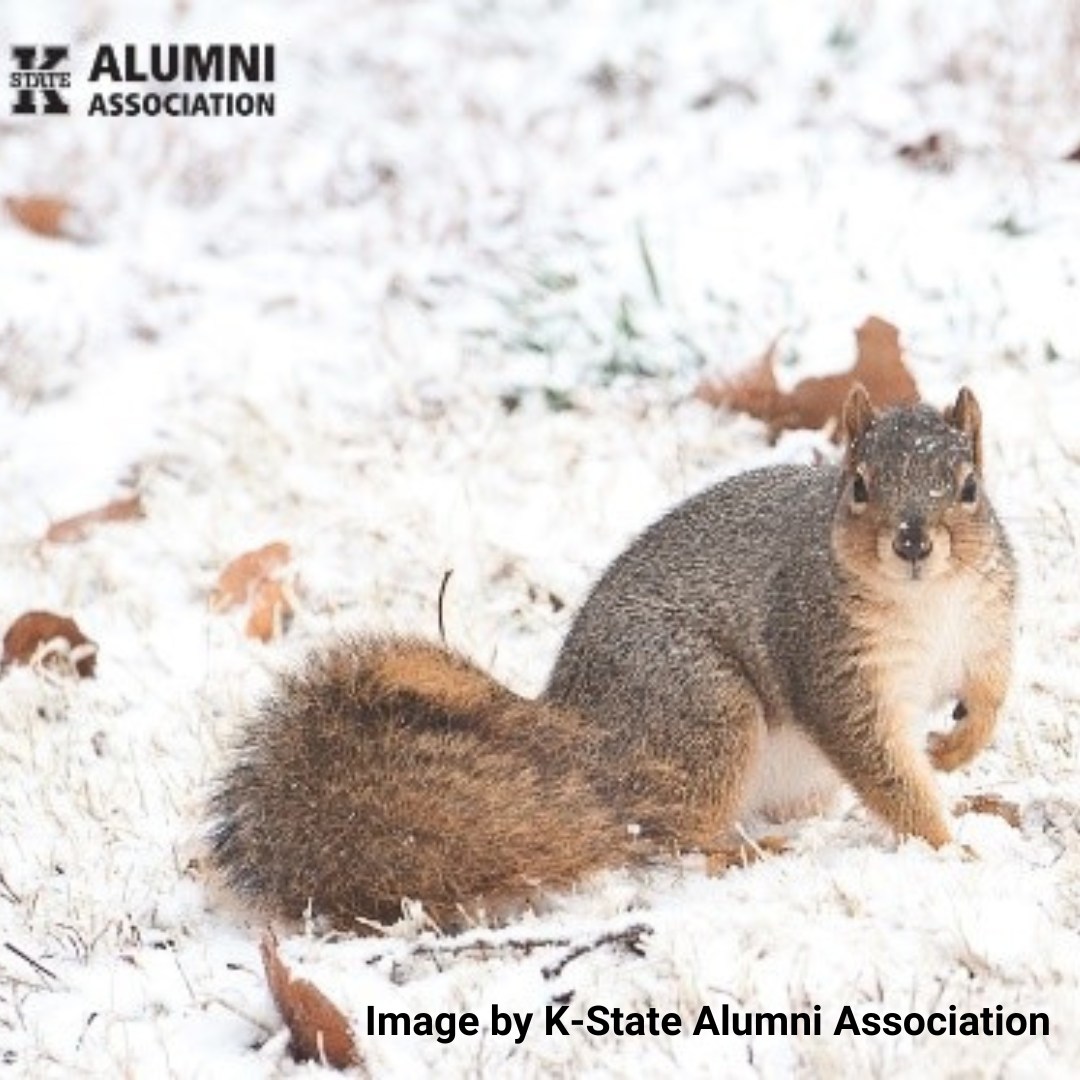
feeders. To protect trees, wrap tree trunks with 2 ft. wide metal sheeting (aluminum roof flashing) or use a baffle placed at least 5 ft off the ground (figure 1). If the tree is isolated and squirrels can’t jump into its branches, the sheeting or baffle will prevent squirrels from climbing the tree. Remember, you need to allow tree growth, so remove the baffle or metal sheet during the growing season. Also, try holding the metal sheet to the tree with a ratchet strap instead of driving nails or screws into the tree.
To protect your bulbs, plant them in a trough lined with 1-inch chicken wire. Once soil has been backfilled around the bulbs, place chicken wire on top of the bulbs before covering everything with a final layer of soil and mulch.
Place bird feeders at least 8 feet from any vegetation or structure from which a squirrel could jump. Use a baffle on the pole to prevent squirrels from climbing. Alternatively, hang your feeder on a wire bracketed by smooth plastic pipes covering the wire. For other ingenious ideas and a good laugh, google “mission impossible squirrel”.
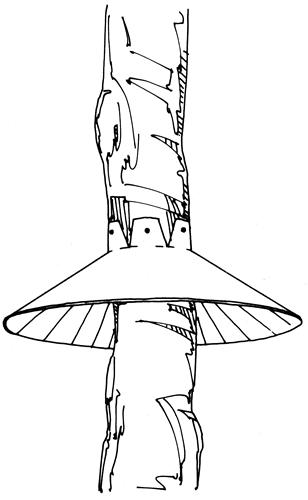 |
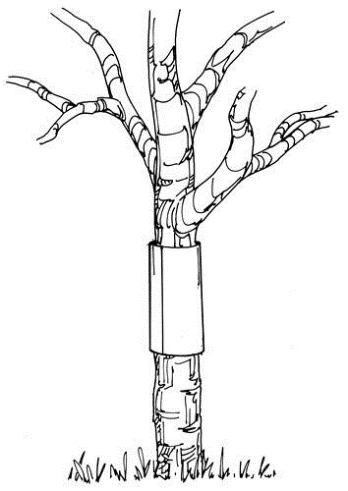 |
Figure 1. Examples of tree protection from the Washington Dept. of Fish and Wildlife
Often the simplest strategy is to try and distract the squirrels by feeding them in a separate area. You can offer them corn or collected acorns and walnuts.
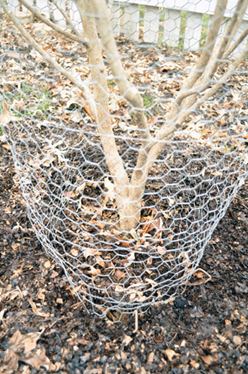 Rabbits
Rabbits
In winter, when food is scarce, rabbits eat twigs and gnaw the bark of woody plants. Look for signs of rabbit damage, such as gnaw marks on trunks and twigs cut at an angle, as well as pea-sized fecal pellets. To protect ornamental plants encircle them with 1-inch mesh galvanized wire 18 to 24 inches high. Stake the wire mesh securely or bury the bottom a few inches deep to prevent rabbits from slipping underneath. For small trees, protect them with a cylinder of wire mesh or hardware cloth. Alternatively, you can purchase plastic tubes that fit around tree trunks. (Image courtesy of Johnson County Extension)
Voles
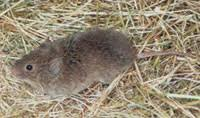 Gnaw marks on woody plants at ground level and piles fecal pellets the size of wheat grains are signs of vole activity. Plastic tubes designed to guard against rabbit damage are not a deterrent for voles. To protect young trees from voles, encircle the trunks with 12-inch tall cylinders of hardware cloth (mesh 1/4 inch or less), burying the bottoms at least 6 inches deep to keep voles from burrowing underneath. Additionally, create a 4-foot diameter vegetation-free zone around the base of young trees to further reduce vole damage. Be sure to keep wood mulch away from tree trunks, as it can provide cover for voles. (Image courtesy of K-State)
Gnaw marks on woody plants at ground level and piles fecal pellets the size of wheat grains are signs of vole activity. Plastic tubes designed to guard against rabbit damage are not a deterrent for voles. To protect young trees from voles, encircle the trunks with 12-inch tall cylinders of hardware cloth (mesh 1/4 inch or less), burying the bottoms at least 6 inches deep to keep voles from burrowing underneath. Additionally, create a 4-foot diameter vegetation-free zone around the base of young trees to further reduce vole damage. Be sure to keep wood mulch away from tree trunks, as it can provide cover for voles. (Image courtesy of K-State)
Deer
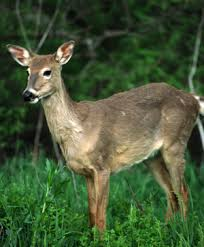
Tubes, wraps, wire fencing, and wire cylinders can be placed seasonally around individual trees and shrubs to prevent deer from browsing. During fall and winter, apply contact repellents on dry days when temperatures are above freezing. Treat young trees thoroughly, but for larger trees it is more economical to treat the tips of branches within reach of deer (about 6 feet above ground). The K-State publication on deer management (linked below) has a list of recommended repellents. (picture from K-State)
References and Resources
K-State Extension Wildlife Management: Voles, Rabbits, Deer, Squirrels